| The Catholic Part in the American
Revolution The Carrolls (Charles, John and Daniel) |
|
Below is a article
written by
Charles Carroll Carter is the board of trustees
of the Charles Carroll House of Annapolis, Maryland,
the birthplace of Charles Carroll of Carrollton.
He is a direct
descendant of Daniel Carroll of Rock Creek.
Dear Reader this is just history written by a direct descendant of Daniel Carroll. In this article the pieces of the puzzle that have been omitted from the history books. It is not what the history books say it is what has been left out of the history books.
Roman
Catholic Source Link click here
|
|||||||||||||||||||||||
|
Catholic Founding Fathers - The Carroll Family by CHARLES CARROLL CARTER George Washington, Thomas Jefferson, John Adams, James Madison, Patrick Henry, Benjamin Franklin. Nearly every schoolchild recognizes them as the Founding Fathers. But there were a great many more Founding Fathers, even if their names are not so familiar as the above. Several of those lesser-known men who played key roles in the creation of the United States of America were Catholics.
George Washington, Thomas
Jefferson, John Adams, James Madison, Patrick
Henry, Benjamin Franklin. Nearly every schoolchild
recognizes them as the Founding Fathers — signers
of the Declaration of Independence, framers of the
Constitution, heroes of the Revolutionary War.
Catholics could no longer hold office,
exercise the franchise, educate their children
in their faith, or worship in public.
With the Declaration
of Independence, all this bias and restriction ended. Charles
Carroll first became known in colonial politics
through his defense of freedom of conscience and
his belief that the power to govern derived from
the consent of the governed. He was a staunch supporter
of Washington, and when the war was
going badly at Valley Forge, he was instrumental
in persuading the Revolution's Board of War not
to replace Washington with General Horatio
Gates. Carroll
supported the war with his own private funds;
he was widely regarded as the wealthiest of all
the colonists, with the most to lose
were the fight for independence to fail. Carroll was greatly
acclaimed in later life, and he
outlived all the other signers of the
Declaration.
Daniel Carroll of Rock Creek
(1730-1796) was a member of the Continental
Congress (1781-1783), and a signer of the Articles
of Confederation. He was a delegate to the
Constitutional Convention and one of only two
Catholic signers of the United States
Constitution. (The other Catholic signer was
Thomas Fitzsimons of Pennsylvania.) At the
Constitutional Convention, Daniel Carroll played
an essential role in formulating the limitation of
the powers of the federal government. He was the
author of the presumption — enshrined in the
Constitution — that powers not specifically
delegated to the federal government were reserved
to the states or to the people.
Daniel Carroll later became
a member of the first United States Congress
(1789-1791). He was also a member of the first
Senate of Maryland,
where he served up to the time of his death. He
was appointed by Washington as one of the first
three commissioners of the new federal city that
is now known as the District of Columbia. In
today's terminology, he would have been considered
the mayor of Washington, D.C.
John Carroll (1735-1815), Daniel
Carroll's younger brother, was educated in Europe,
joined the Jesuit order, and was ordained a
priest. He founded a private school for boys and
named it after the town where it was located, Georgetown, a
port on the Potomac River that later became part
of Washington, D.C. He went on to be elected — by
all the Catholic priests in America — to become
America's first Catholic bishop. He later became
archbishop of Baltimore. In any procession of
American bishops, the archbishop of Baltimore
always goes last in recognition of its role as
America's oldest diocese. In 1789, John
Carroll founded the college in Georgetown that
later became known as Georgetown University.
During a period when the
Revolutionary War was going badly, Washington
asked John Carroll to join a mission to Canada to
seek the support of the French for the colonies.
Benjamin Franklin, Samuel Chase, and Charles
Carroll of Carrollton were the others on the
four-man mission. While it failed, it established
a relationship with the French, much influenced by
the Catholic faith they held in common with the
Carrolls. It bore fruit years later at Yorktown, where the largely Catholic-financed
French fleet cut off supplies to
British general Charles Cornwallis, and
Washington was able to force Cornwallis to
surrender and bring the war to an end.
John Carroll was an intimate of
Washington. He wrote a prayer at
the time of Washington's inauguration asking
God's blessing on the president, Congress, and
government of the United States — a prayer still
very much in use today. Out of gratitude for John Carroll's
support during the war, Washington gave a
modified version of the seal of the United
States to the institution that is now Georgetown
University, and that seal is still in use.(It
might be said that John Carroll gave the seal to
Washington)
Despite their enormous
contributions to the American founding, the three Carrolls
somehow fell below the radar screen of
recognition as full-fledged founding fathers.
Perhaps that was because they were Catholics in a
country and a culture that for many
years was overwhelmingly Protestant.
Roman Catholic Source Link
click here
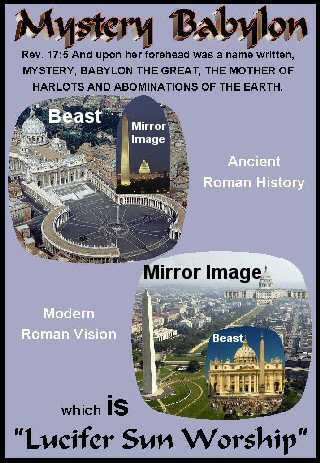 With Daniel Carroll providing land for the Capitol, with Charles Carroll as War
Commissioner,
controlling all the executive duties of the
military department, with its ammunition
supplies of cannon balls, shot, kettles, spikes
and nails to the army, with John Carroll
an intimate friend of Franklin, even living in
Franklin's house, and District of Columbia With Daniel Carroll providing land for the Capitol, with Charles Carroll as War
Commissioner,
controlling all the executive duties of the
military department, with its ammunition
supplies of cannon balls, shot, kettles, spikes
and nails to the army, with John Carroll
an intimate friend of Franklin, even living in
Franklin's house, and District of Columbia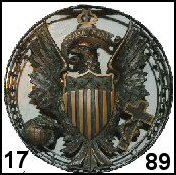 donor
and Capitol Commissioner Daniel
Carroll close to
Washington, with John
Carroll establishing
Jesuit Georgetown
University, whose seal proclaims a Roman
eagle grasping the world and the cross,
State and Roman Catholic Church with a
banner in its beak, "Utraque Unum,"-"Both Together," with
the mayor of the District of Columbia Carroll's nephew Robert Brent, it is not hard to see the proud Roman
Catholic component of the American Revolution...and
the Roman Catholic vision of a land where Roman
Catholicism would be given the freedom to expand
to the maximum...to take
over the nation...and the world. donor
and Capitol Commissioner Daniel
Carroll close to
Washington, with John
Carroll establishing
Jesuit Georgetown
University, whose seal proclaims a Roman
eagle grasping the world and the cross,
State and Roman Catholic Church with a
banner in its beak, "Utraque Unum,"-"Both Together," with
the mayor of the District of Columbia Carroll's nephew Robert Brent, it is not hard to see the proud Roman
Catholic component of the American Revolution...and
the Roman Catholic vision of a land where Roman
Catholicism would be given the freedom to expand
to the maximum...to take
over the nation...and the world.
And
REMEMBER that in England and in the American colonies the Mass was forbidden. |
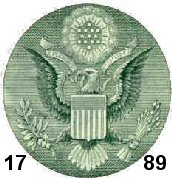
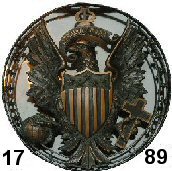
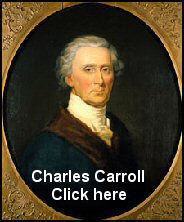
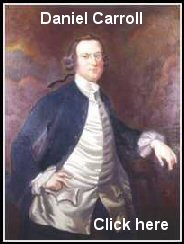
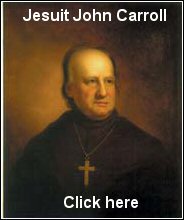
No comments:
Post a Comment